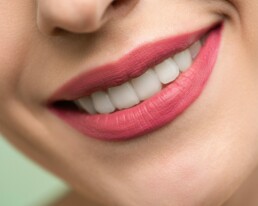Implant Retained Denture
Do your dentures move around and have no stability or suction in your mouth?
Do you struggle to chew without your denture dislodging?




Benefits of Implant Retained Dentures
Digital implant-retained over dentures are a modern solution for individuals who struggle with stability and function. They offer several benefits over traditional dentures, including better fit, comfort, and aesthetics. Here are some of the significant benefits of digital implant-retained over dentures.
One of the significant benefits of digital implant-retained overdentures is that they are more stable than traditional dentures. Implants are surgically placed into the jawbone and act as a foundation for the overdenture. This provides more stability and support than traditional dentures, which can slip or move when eating or speaking.
Digital implant-retained overdentures provide better functionality than traditional dentures. They allow the wearer to eat a wider variety of foods with more ease, including harder or stickier foods. With better stability, the overdenture allows the wearer to chew food more efficiently, which improves digestion.
Digital implant-retained overdentures are more comfortable than traditional dentures. Because they are secured to the implants, they do not move or rub against the gums, which can cause discomfort or sore spots. Additionally, the overdenture is designed to fit the patient’s mouth precisely, which provides better overall comfort.
Digital implant-retained overdentures also offer an aesthetic improvement over traditional dentures. The overdenture is custom-designed to match the patient’s remaining teeth and is made from high-quality materials. This ensures that the overdenture looks and feels more natural.
Implant-retained overdentures are more hygienic than traditional dentures. They are easy to clean, and there is no need to use adhesive creams or gels. Additionally,
because the overdenture is supported by implants, there is less chance of food or bacteria getting trapped underneath, which reduces the risk of infection.
Implant-retained overdentures have a longer lifespan than traditional dentures. With proper care and maintenance, the overdenture can last for years, making it a more cost-effective option in the long run.
Digital implant-retained overdentures are created using advanced technology, which ensures a more precise and accurate fit. Digital scans are taken of the patient’s mouth, which are used to create a 3D model of the overdenture. This results in a better-fitting, more comfortable overdenture that requires fewer adjustments.
There are several types of implant retained overdentures, including:
Bar-retained overdentures are a type of implant supported overdenture that uses a metal bar to connect the implants. The bar is attached to the implants and is secured in place. The overdenture is then attached to the bar, providing improved stability and support when compared with locator/ball retained overdentures stability and support.
Ball-retained overdentures, also known as stud or locator overdentures, use a ball-and-socket attachment to secure the overdenture to the implants. The ball is attached to the implant, and the socket is placed in the overdenture. The ball and socket provide a secure and stable attachment.
Hybrid overdentures, also known as fixed-detachable overdentures or implant-supported bridges, are a type of implant retained overdenture that is a combination of a denture and a fixed dental bridge. Hybrid overdentures use a framework of metal or zirconia to support the overdenture, which is then secured to the implants.
Screw-retained overdentures use screws to secure the overdenture to the implants. The screws are hidden beneath the overdenture, making this type of overdenture more aesthetically pleasing than other types of implant-retained overdentures.
Custom milled bar overdentures are a type of bar-retained overdenture that uses a customized bar that is milled from a block of titanium or zirconia. The customized bar is designed to fit the shape of the patient’s mouth, providing better stability and support. The choice of implant retained overdenture will depend on the patient’s individual needs, the number and location of missing teeth, and the health of the jawbone.





